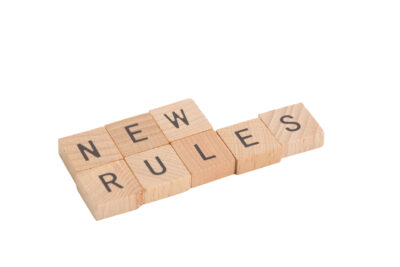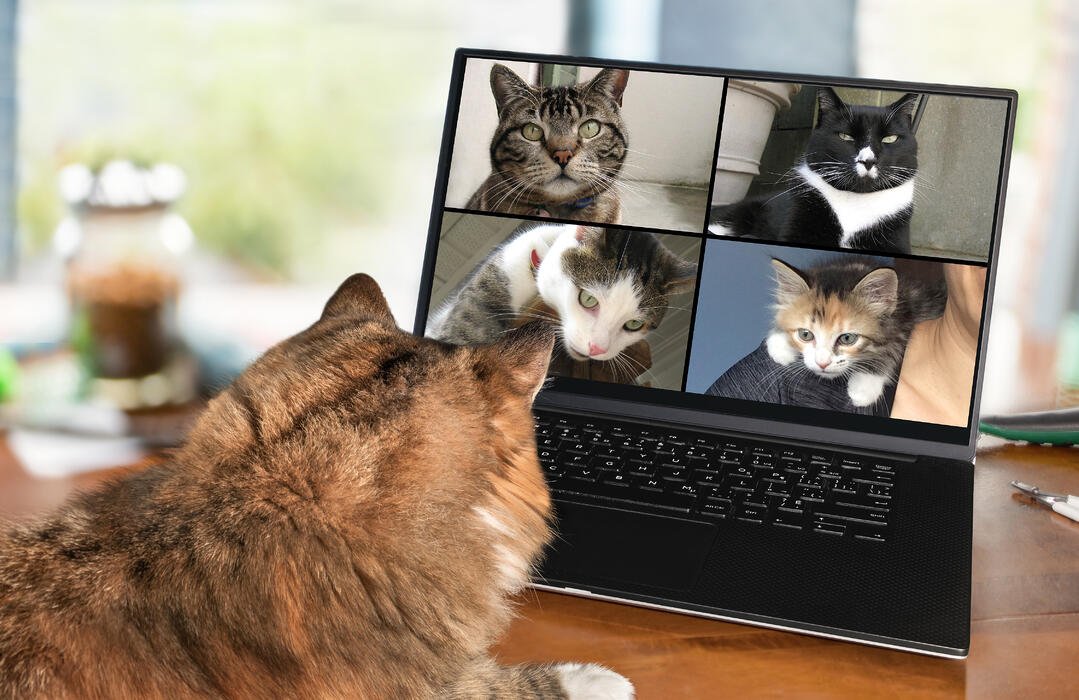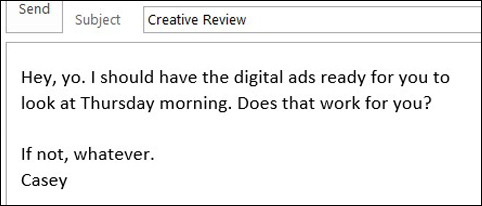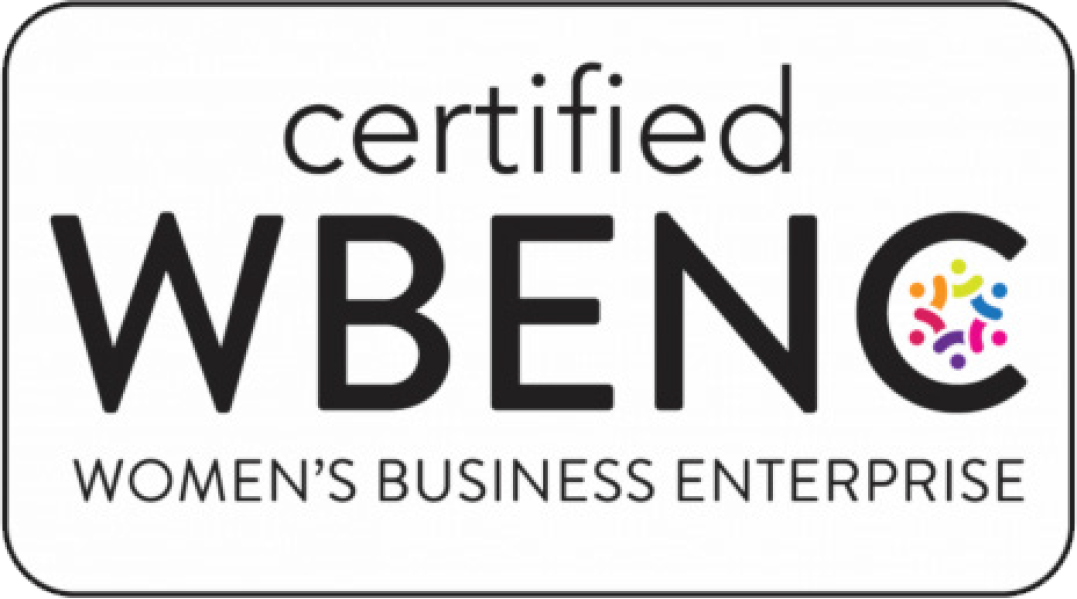
Three Fresh Ideas about employee engagement … and a video that will make you LOL
Vol. 2, June 2022
 Hello, readers!
Hello, readers!
Can we talk about employee engagement? For businesses (still) trying to crack the code on pandemic office life, the rules have changed. All those tried-and-true strategies you’ve relied on for years? They’re worth about as much as a $5 bill at the gas station.
It’s a whole new level of uncertainty. And to wrangle it, we need a plan.
We’ve worked with a lot of clients who are rethinking their employee engagement strategy, and we’ve learned a thing or two along the way. And, because our parents taught us to share (except when it comes to proprietary information), we’ve compiled a few of our best suggestions right here for your convenience.
Read on for Three Fresh Ideas on topics like writing job descriptions that will engage the right people from the start, how to communicate meaningfully with them once they’re on board, and what exactly “communication” means to the newest members of the American professional workforce. (Hint: It may not be what you’re used to.)
Finally, don’t miss out on Episode 1 below of our web series on what going back to a hybrid office after two years really looks like. We’re willing to bet you can relate.

Why isn’t anyone responding to your job posting?
You have a job opening, and you’ve posted the role online via all the usual suspects. You wait … and you wait … and then you wait some more, but the applicants you’re getting are either not qualified, not a fit or nonexistent.
What the heck?
A recent Pew Research Center study found that the top reasons people quit their jobs these days include low pay, few opportunities for advancement, not enough flexibility or feeling disrespected at work. Those aren’t necessarily shocking, but they uncover two hard truths:
One — Those people are all looking for jobs that give them those things. And they’re legit things to want. If you, as an employer, can ease their workplace pain, are you clearly telling them that?
Two — Whether you’re an account manager, an accountant, a copywriter, an HR specialist or any other position in corporate America, your responsibilities probably won’t change much from company to company. That’s why experience is so important: you’ve done this sort of thing before.
But while individual roles aren’t necessarily unique, your company is. It’s essential to let potential job candidates know why. What makes your organization stand apart? Why do people want to work for you (vs. in that position for anyone)?
We put together a guide to help you post job openings in a way that will draw qualified candidates who think your company sounds pretty rad.

Employee engagement, hybrid-style: Herding cats, without the fur and sense of entitlement
While some companies are bringing their employees back to the office en masse, even more are jumping on the hybrid-work bandwagon. How’s that going, you ask?
According to a number of our colleagues, it’s like herding cats. But everyone is wearing business casual.
Some people work from home full time. Others come into the office two to three times per week. Still others only show up for meetings, company events or if the mood strikes them.
It’s safe to say that employees who are offered this level of flexibility love it. But if it was hard to get your staff on board with culture change when everyone was in the same building, how in the world can you engage them when it’s not even guaranteed that the office door will be unlocked when you get there?
Thankfully, we’re a communications agency. Herding cats is our love language (and our catnip).
If navigating the new world of hybrid work has you feeling lost, this 5-step plan can not only help you engage your employees, but also measure the success of your efforts.

Hasta la pasta
We have some news for the Boomers, Xers and Millennials — Gen Z has entered the chat. And they’re not exactly satisfied with the status quo.
As writers, this is most evident in the (seemingly rapid) change in what is considered appropriate corporate communication. If someone calls in sick, for example, it may never involve an actual phone call. Group texts are the norm — even when colleagues are within actual speaking distance.
The most shocking change, though, might just be the business email. If you were taught to conclude formal communication with Best or Warm Regards, how do you respond when you get a message that’s full of emojis and ends with Hasta la pasta?
If the pandemic has taught us anything, it’s that we can live with change. And just maybe, losing some of the formality is a good thing.
We should take a moment here to recognize that some business topics are heavy and require a great deal of formal, careful language, and writing those well is a topic for another issue. But whether the email is about layoffs or lunch plans, the goal of communication is to be clear —regardless of how it’s delivered.
In that spirit, maybe it doesn’t matter if casual workplace exchanges take place over Facebook Messenger. Or, that we sometimes have entire conversations using only memes. (You know you do it, too!)
Maybe Gen Z is on to something, and the rest of the workforce could stand to loosen up a little in the way we communicate.
As long as it isn’t in Comic Sans.
Later, yo.
Return to work, IRL
It’s not as easy as it sounds.

Three Fresh Ideas about employee engagement … and a video that will make you LOL
Vol. 2, June 2022
Hello, readers!
Can we talk about employee engagement? For businesses (still) trying to crack the code on pandemic office life, the rules have changed. All those tried-and-true strategies you’ve relied on for years? They’re worth about as much as a $5 bill at the gas station.
It’s a whole new level of uncertainty. And to wrangle it, we need a plan.

We’ve worked with a lot of clients who are rethinking their employee engagement strategy, and we’ve learned a thing or two along the way. And, because our parents taught us to share (except when it comes to proprietary information), we’ve compiled a few of our best suggestions right here for your convenience.
Read on for Three Fresh Ideas on topics like writing job descriptions that will engage the right people from the start, how to communicate meaningfully with them once they’re on board, and what exactly “communication” means to the newest members of the American professional workforce. (Hint: It may not be what you’re used to.)
Finally, don’t miss out on Episode 1 below of our web series on what going back to a hybrid office after two years really looks like. We’re willing to bet you can relate.

Why isn’t anyone responding to your job posting?
You have a job opening, and you’ve posted the role online via all the usual suspects. You wait … and you wait … and then you wait some more, but the applicants you’re getting are either not qualified, not a fit or nonexistent.
What the heck?
A recent Pew Research Center study found that the top reasons people quit their jobs these days include low pay, few opportunities for advancement, not enough flexibility or feeling disrespected at work. Those aren’t necessarily shocking, but they uncover two hard truths:
One — Those people are all looking for jobs that give them those things. And they’re legit things to want. If you, as an employer, can ease their workplace pain, are you clearly telling them that?
Two — Whether you’re an account manager, an accountant, a copywriter, an HR specialist or any other position in corporate America, your responsibilities probably won’t change much from company to company. That’s why experience is so important: you’ve done this sort of thing before.
But while individual roles aren’t necessarily unique, your company is. It’s essential to let potential job candidates know why. What makes your organization stand apart? Why do people want to work for you (vs. in that position for anyone)?
We put together a guide to help you post job openings in a way that will draw qualified candidates who think your company sounds pretty rad.

Employee engagement, hybrid-style: Herding cats, without the fur and sense of entitlement
While some companies are bringing their employees back to the office en masse, even more are jumping on the hybrid-work bandwagon. How’s that going, you ask?
According to a number of our colleagues, it’s like herding cats. But everyone is wearing business casual.
Some people work from home full time. Others come into the office two to three times per week. Still others only show up for meetings, company events or if the mood strikes them.
It’s safe to say that employees who are offered this level of flexibility love it. But if it was hard to get your staff on board with culture change when everyone was in the same building, how in the world can you engage them when it’s not even guaranteed that the office door will be unlocked when you get there?
Thankfully, we’re a communications agency. Herding cats is our love language (and our catnip).
If navigating the new world of hybrid work has you feeling lost, this 5-step plan can not only help you engage your employees, but also measure the success of your efforts.

Hasta la pasta
We have some news for the Boomers, Xers and Millennials — Gen Z has entered the chat. And they’re not exactly satisfied with the status quo.
As writers, this is most evident in the (seemingly rapid) change in what is considered appropriate corporate communication. If someone calls in sick, for example, it may never involve an actual phone call. Group texts are the norm — even when colleagues are within actual speaking distance.
The most shocking change, though, might just be the business email. If you were taught to conclude formal communication with Best or Warm Regards, how do you respond when you get a message that’s full of emojis and ends with Hasta la pasta?
If the pandemic has taught us anything, it’s that we can live with change. And just maybe, losing some of the formality is a good thing.
We should take a moment here to recognize that some business topics are heavy and require a great deal of formal, careful language, and writing those well is a topic for another issue. But whether the email is about layoffs or lunch plans, the goal of communication is to be clear —regardless of how it’s delivered.
In that spirit, maybe it doesn’t matter if casual workplace exchanges take place over Facebook Messenger. Or, that we sometimes have entire conversations using only memes. (You know you do it, too!)
Maybe Gen Z is on to something, and the rest of the workforce could stand to loosen up a little in the way we communicate.
As long as it isn’t in Comic Sans.
Later, yo.
Return to work, IRL
It’s not as easy as it sounds.
 SUBSCRIBE TO
SUBSCRIBE TO
Three fresh ideas (and a meme)
Our monthly take on today’s marketing and communications topics… and a little fun, too.


